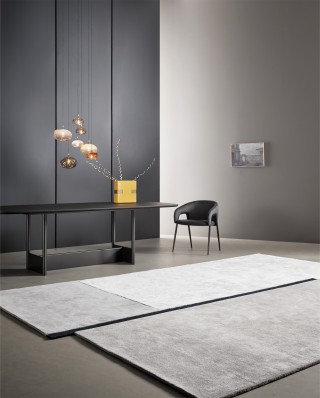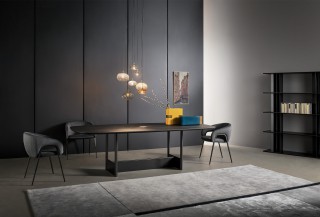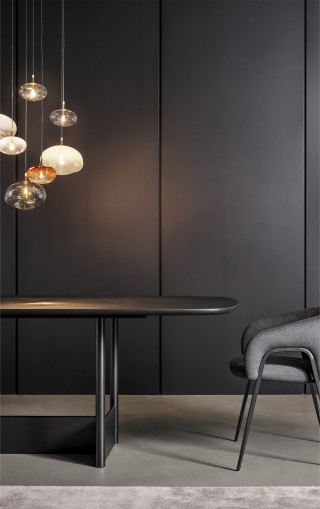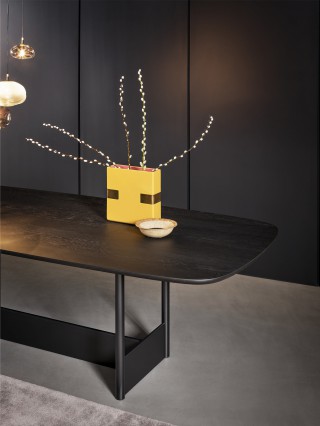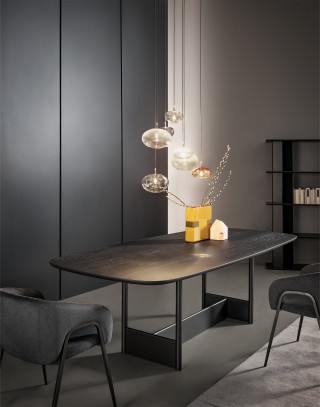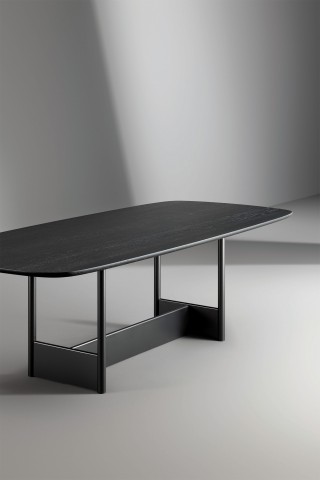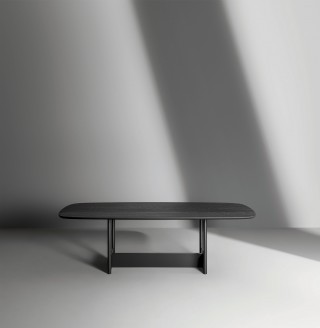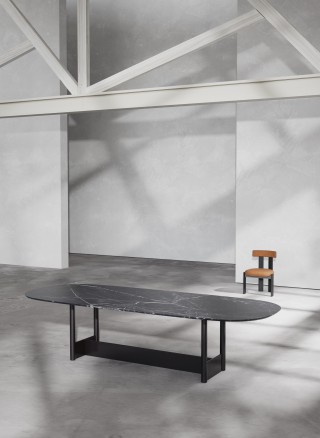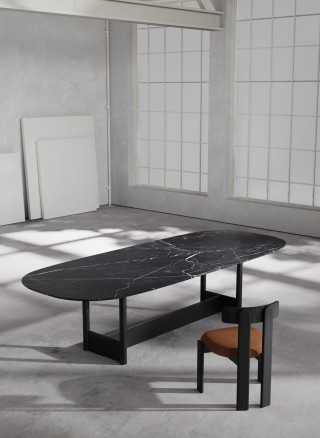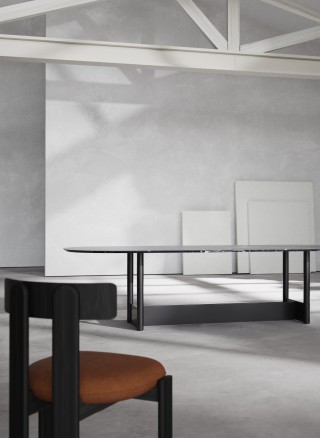CANVAS
BONALDO
The “Canvas” table has a strong personality thanks to its graphic silhouette and unexpected proportions. But it's also a table that, thanks to the sober lines of its base, can accommodate many different tabletop finishes, hence its versatility.
The base of the table is a combination of simple geometric elements and a tabletop that simply sems to be set on top of it, a little like some tables found in workshops. The name "Canvas" comes from this inspiration. It's as if a freshly painted canvas, in this case the tabletop, had been placed on roughly constructed steel trestles to dry.
The idea behind the Canvas table is to be able to use a large number of different table tops on the same base, and for this to become the very characteristic of the table. The minimalism of the base allows this freedom.
Despite its apparent visual simplicity, the base's architecture is unexpected, as all its elements meet and connect at the bottom just above the floor. The visual weight of the base is at the very low, with large metal plates giving birth to an "I"-shaped base reminiscent of the shapes of certain metal profiles. The height of this base seems almost disproportionate to the slender metal tubes that extend from its ends and support the tabletop. The lightness of the legs makes the tabletop seem to float. It's as if the metal structure of the table has been turned upside down to support the tabletop!
As for the top, with its generous curves and thickness, it tells an almost opposite story to that of the base, which is much more minimal and linear, but as a whole the table has a true harmony. What characterizes this collection above all is the impression of lightness, of levitation, and, in a way, of reversing the codes and the visual weight of a table.
